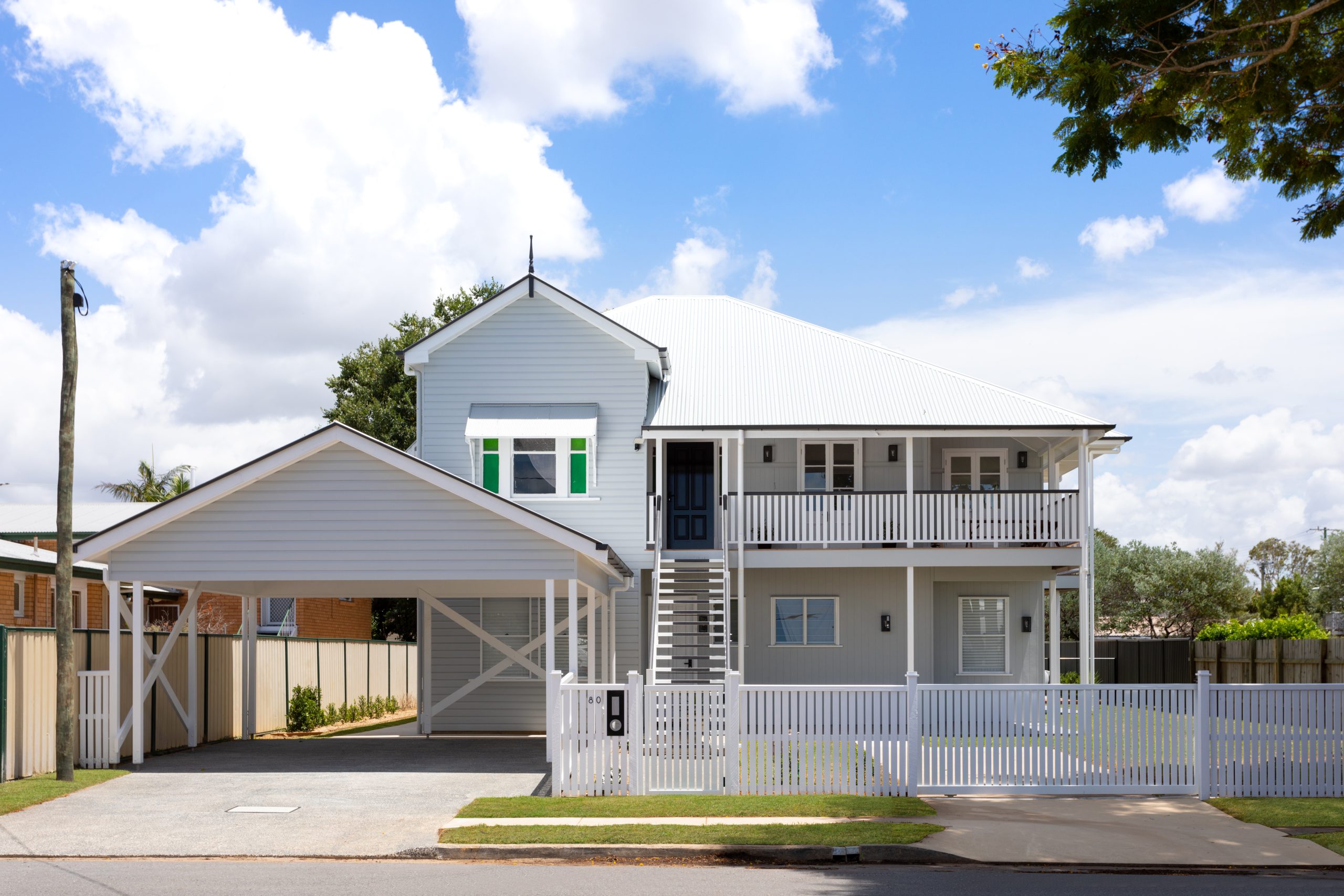Famed for their wraparound verandas and rustic charm, Queenslander homes hold a strong appeal for homeowners in Brisbane.
However, due to the age of these houses, many of them will require extensive renovations to make comfortable living spaces.
If you’re considering buying a post-war home or a Queenslander house, there are a few things you should think about before making your decision.
In this post, we’re sharing our advice on warning signs to look out for in Queenslander houses before making your purchase.
1. Termites
Termites can pose a serious threat to heritage properties, particularly given their often extensive wooden components. These pests may have been active for decades, compromising structural integrity from within.
Look for signs like hollow-sounding timber, mud tubes along foundations, or damaged wood that crumbles easily. Professional pest inspections are essential, as older homes may have hidden access points and difficult-to-reach spaces where termites thrive.
2. General Condition
The general condition of a Queenslander home requires careful assessment beyond surface-level charm. Pay attention to signs of neglect like water stains, peeling paint, or musty odours. What might appear as “character” could mask serious underlying issues. Examine the roof condition, window seals, and drainage systems carefully, as these fundamental elements often deteriorate first in older properties.
3. Maintenance
Maintenance costs for heritage homes typically exceed those of modern properties substantially. Original materials and craftsmanship techniques may be expensive or difficult to source. Consider whether specialised tradespeople will be needed for repairs and factor in ongoing preservation requirements. Many heritage homeowners underestimate the time and financial commitment required to maintain these properties properly.
4. Structural Defects
Structural defects in Queenslander homes can be particularly concerning due to ageing materials and outdated building techniques. Look for telltale signs like cracks in walls (especially around windows and doors), uneven floors, or doors that don’t close properly. Foundation issues are common in older homes and can be extremely costly to repair. Have a structural engineer specifically experienced with heritage properties conduct a thorough assessment.
5. Rewiring
Rewiring is often necessary in heritage homes as older electrical systems may be dangerous and inadequate for modern needs. Look for signs of outdated wiring like knob-and-tube systems, fabric-covered wires, or insufficient power outlets. Upgrading electrical systems in heritage homes can be complex and expensive due to the need to work around original features while meeting current safety standards.
6. Asbestos
Asbestos presents a serious health concern in Queenslander properties, commonly found in insulation, floor tiles, ceiling materials, and exterior cladding. Testing is crucial as asbestos was widely used in Queenslander construction until the 1980s. Removal must be conducted by licensed professionals and can be particularly challenging in heritage homes where asbestos materials may be integrated with protected features.
7. Queenslander Character Restrictions
Character restrictions can significantly limit your ability to modify or upgrade the property. Research local heritage protection laws and understand which elements must be preserved. Some properties require approval for even minor changes like paint colours or window replacements. These restrictions can impact both the cost and feasibility of necessary updates.
8. Poor Previous Renovations
Poor previous renovations often plague heritage homes, where well-intentioned but improper work may have compromised original features or structural integrity. Look for signs of amateur workmanship, inappropriate materials, or modifications that don’t match the original style. Correcting substandard renovations while preserving heritage character can be more expensive than starting from scratch.
Final Thoughts: Queenslander Homes
Buying a Queenslander home can be a rewarding experience, especially if you choose to renovate it to create your family’s dream home. Follow our advice above to ensure you are purchasing a quality home that won’t lead to too many headaches down the road.
If you’re ready to start renovating your Queenslander, then talk to us. At JM Homes, we’re Brisbane’s renovation and building experts. We ensure we always take the time to listen, communicate and act with our clients interests at heart at every stage of the build.
Take a look at some of our recent projects for some inspiration or get in touch with our team.


